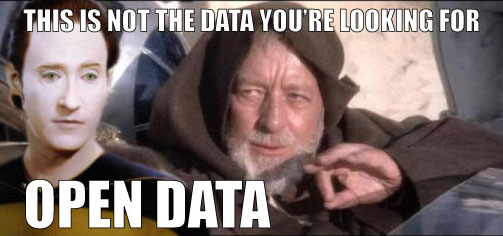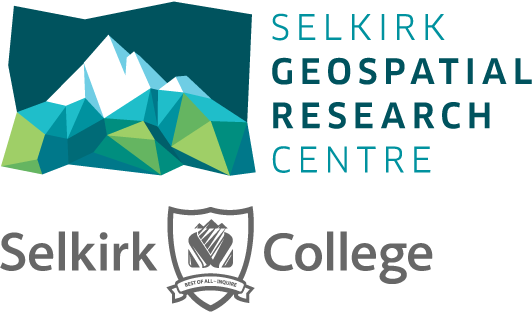
The Fine Art of Open Data: A GIS Survival Guide for the Arithmophobic
By Karen Godbout on 2017-07-14 15:00
I began the BGIS program at Selkirk College in September 2016. This was a mid-life choice, being more than ready to develop in a new direction after years working as a library assistant and taking numerous, unfocused undergraduate courses.
Though entering from a determinedly humanities background, I discovered many innovative and creative applications of GIS before ultimately deciding to commit to the program. I am so pleased to have found more connections between the arts and GIS than I could have imagined. Colour theory, information policy, data visualization and design. All well within my comfort zone.
Certainly not within my comfort zone: the language of GIS, and the math. For the first few weeks, I was desperately searching Google for every new term I heard. Terms which everyone else apparently understood. Datum, geoid, UTM, triangulation. Whaa? Only ten months later and I am so comfortable with these terms that it now seems ridiculous. As for the math, my teenage conviction of its utter uselessness came back to haunt me. Thank the heavens for my brilliant husband. I entirely avoided panic and meltdown in class with the reassuring thought, “Dan can help me with that at home.” If not confident with the math itself, I can now figure out what needs to happen, and how to get the software to do it. Though, I am still sure that at any moment I will be discovered to be clueless.
Statistics are another thing entirely. I am convinced that my brain simply has not developed to get around statistics. I will be working on that through August. Yay! On the beach with ‘Manga Guide to Statistics.”
Enough about me; more about GIS. It has such enormous potential for amazing applications that can truly help people everywhere, and the planet, and all its creatures. It is an extraordinary, exciting time to be entering into the field of GIS, most especially at Selkirk College where we have the Rural Development Institute and the Selkirk Geospatial Research Centre (SGRC). These two organizations, which are constantly working on local and regional contracts, plus federal government-funded studies, create such remarkable opportunities for students, and for our communities.
The particular GIS co-op work placement I was offered was with the SGRC, supporting its SSHRC study on rural open data. (See First impressions of an open data initiate). I readily accept that law, policy, and public management are not for everybody. Let’s just say it – it is epically nerdy. For myself, it was a natural evolution from issues around freedom of expression into open data, and as a reluctant activist, just sufficiently political. The job included a visit to Montreal for the Geothink Summer Institute at McGill University (Geothink is a partner of the SGRC in this project). I have no doubt; a valuable experience such as this could not have been available to me [outside of a graduate degree] anywhere but at Selkirk (See GeoThoughts on GeoThink).
Specifically, my contributions to the Rural Open Data project were:
-
Meeting and consulting with a specialist GIS researcher regarding her preparation of a literature review and knowledge brief for the study (in progress).
-
The creation of a high-level, single-sheet document summarizing the essentials of open data, and highlighting how rural open data is a unique aspect. (See What is Open Data?).
-
Meeting and consulting in-house on the preparation and release of a significant rural open data survey of regional, local governments and other community data users. I directly arranged the document in Survey Monkey, editing for usability.
-
Preparing a series of Columbia Basin/Kootenay-Boundary community maps, giving the population and area of each municipality, for use in presentations and publications about the rural open data project (in progress).
-
Evaluating the open data status and quality of cities throughout British Columbia, generating a georeferenced table of findings released as an interactive web map. QGIS was the open source software used to prepare the web map, which involved learning new skills on my part (in progress).
My GIS co-op experience has been instrumental. It has provided a highly positive work environment where I have been autonomous and self-directed. I was selected for the open data project as a mature student, with the appropriate background in libraries and information management. Yet again, I have no doubt that such an advanced opportunity would have not been available to me anywhere but at Selkirk. Elsewhere, this would easily be a graduate-student position. In addition, having no other GIS experience coming in, I am certain that this co-op work term will be essential to completing the BGIS, and moving forward in a new career discipline.
